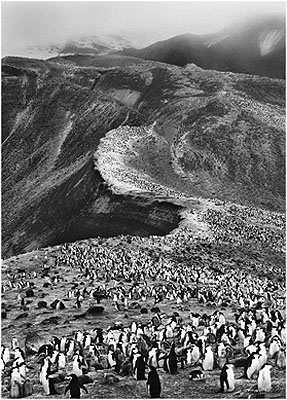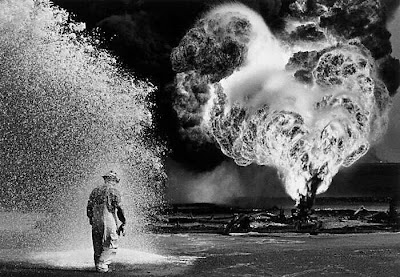@zhjuan,
I have no idea who is the best, but I have several present favorites. Photographers vary so much in subject matter and technique, and my interest in different ones varies over time.
One of my present favorites is Sebastaio Salgado -
http://www.unicef.org/salgado/bio.htm


Quoting from the blog where I found that photo -
[email protected]..
"Sebastiao Salgado is a master photographer from Brazil. He began his professional career as an economist, but after taking pictures on a business trip to Africa he realized that he had found his real passion and talent. Sebastiao's approach to photography is all about process. First of all he (still) shoots film on a Leica 35mm camera and uses a small selection of wide angle lenses. the film that he primarily shoots in a 3500ASA (super fast, super grainy) film that allows him to shoot at pretty much any light level without the use of intrusive flash bulbs. I once read in an interview with Salgado that will visit town or community that he is documenting and live with the people for 30 or 40 days before he starts photography. He likes to become invisible and get very close to his subjects (remember he primarily uses wide angle lenses). He also said in that interview that his photographs are not taken but given to him from his subjects. He rates his 3500 ASA film at 1600 and sometimes 800. In his minds eye he knows what he is trying to achieve in terms of grain structure and depth of field in the negatives that he will receive from the lab weeks after he has shot the images. For Salgado, his film choice, the way he rates it, the lenses that camera that he chooses and the way he interacts with his subjects is a part of his process. Of course Salgado has an incredible eye; but that's only a part of how he creates the outcome of the images that he makes. We must also keep in mind that shooting film limits him to 36 shots per roll on 35mm film. The Leica is a manual focus and manual shutter camera. He has to be selective with what he shoots and he can't roll off 35 shots at the press of a button like you can with digital photography. He doesn't have the luxury of seeing what he has just shot instantly so that he can adjust composition or camera settings; all of that has to be done in his mind. When I was getting my MFA and I was reviewing his work for the first time I used to be baffled at how he was able to make his images look and feel like that. He was a magician to me and no other photographer that I have studied made images quite like his...maybe just as great but not like. He had a signature style that was nearly impossible to reproduce. There is magic in his process."
I also like Marc Riboud -
http://en.wikipedia.org/wiki/Marc_Riboud
[img]/2007/07/0042.jpg?w=500[/img] from
http://streetpulse.files.wordpress.com
On the Train to Guangzhou, China 1957. ©Marc Riboud.